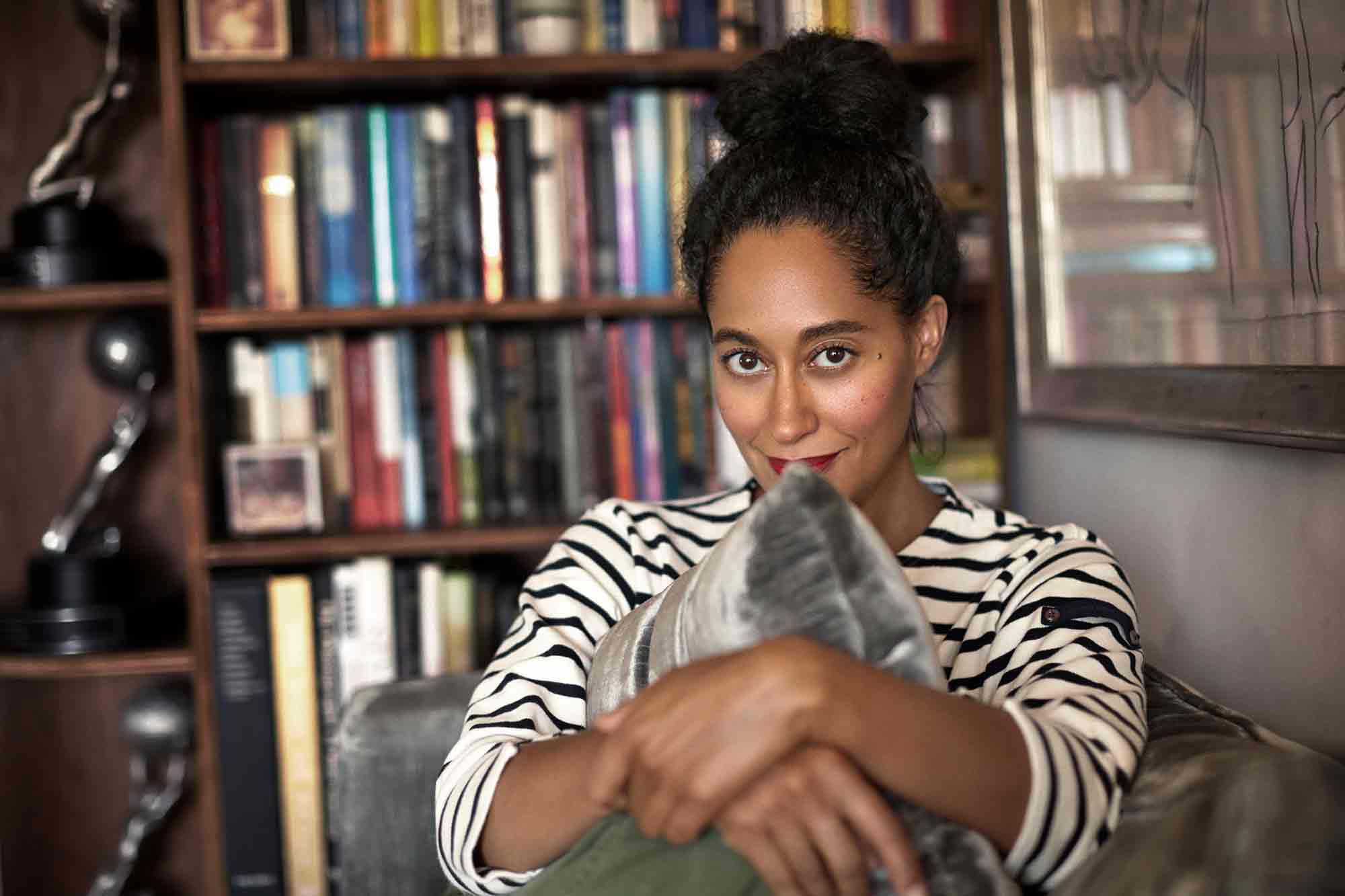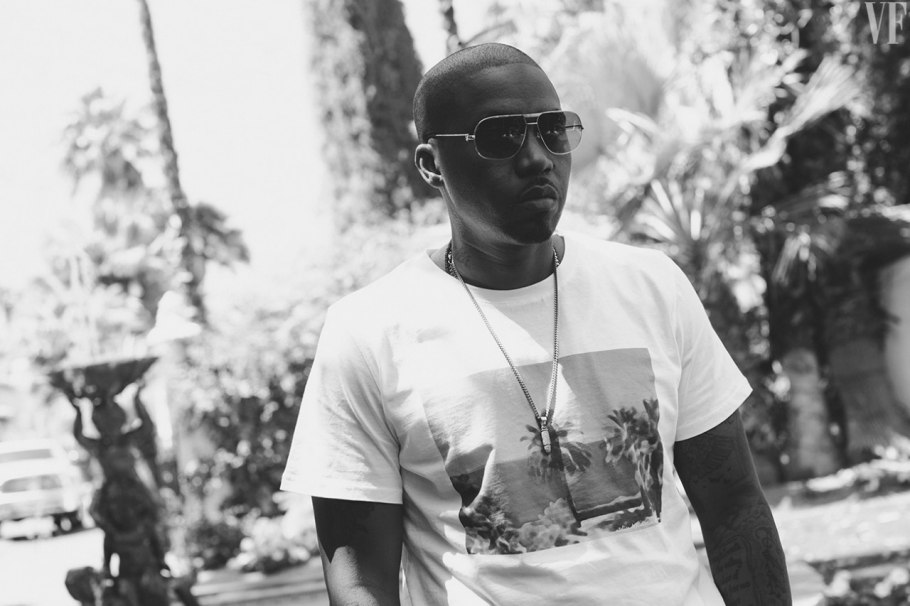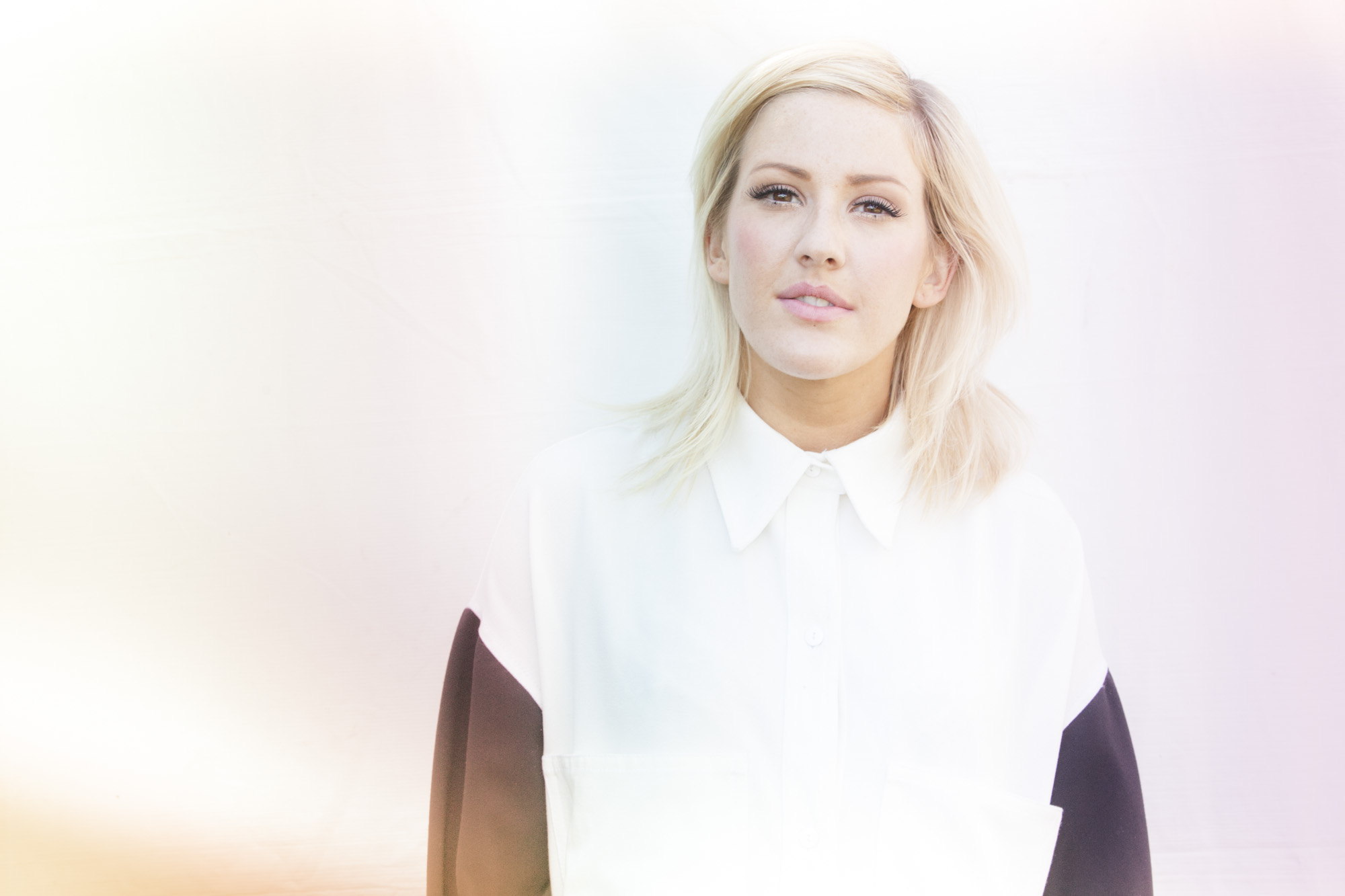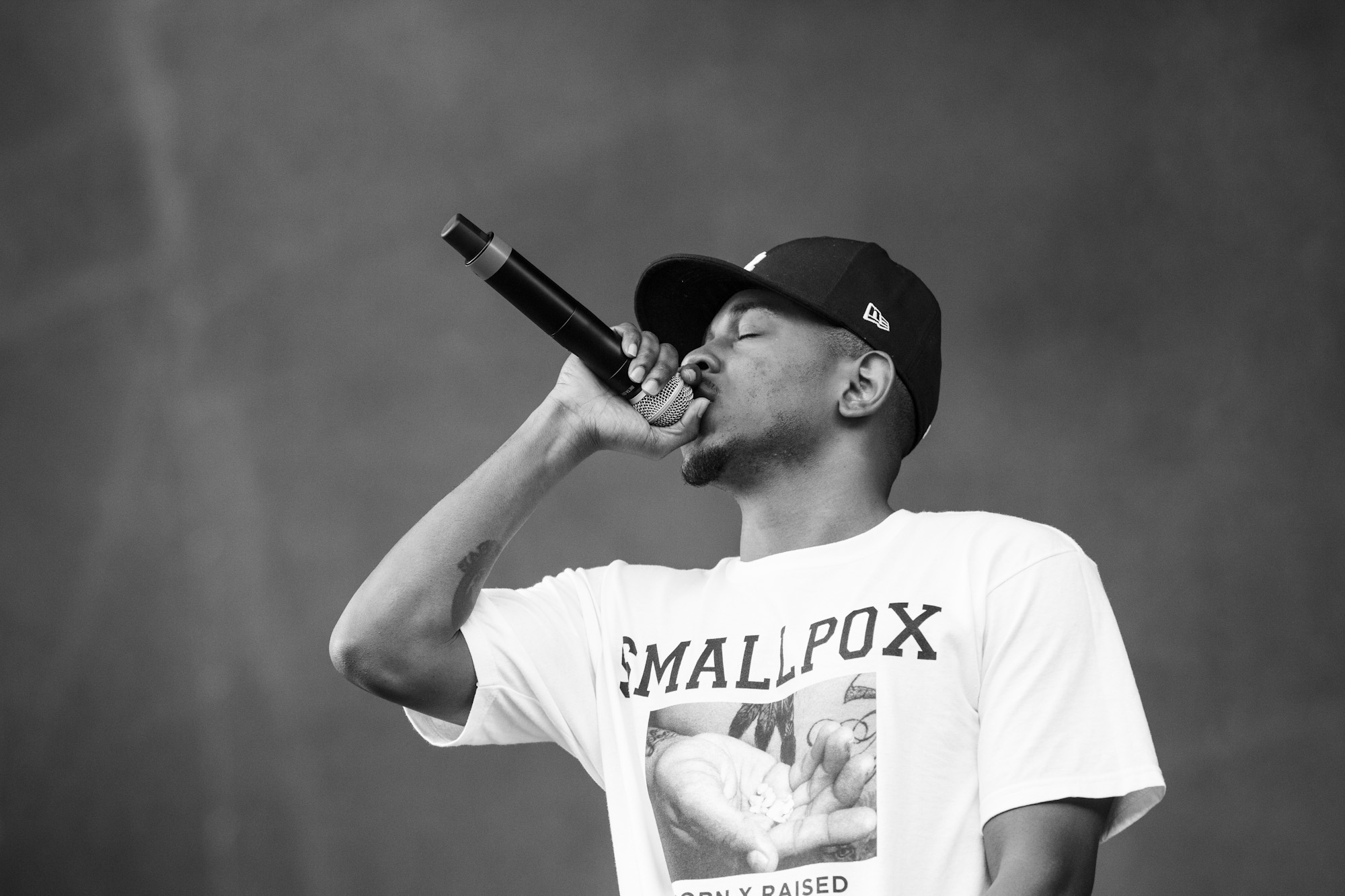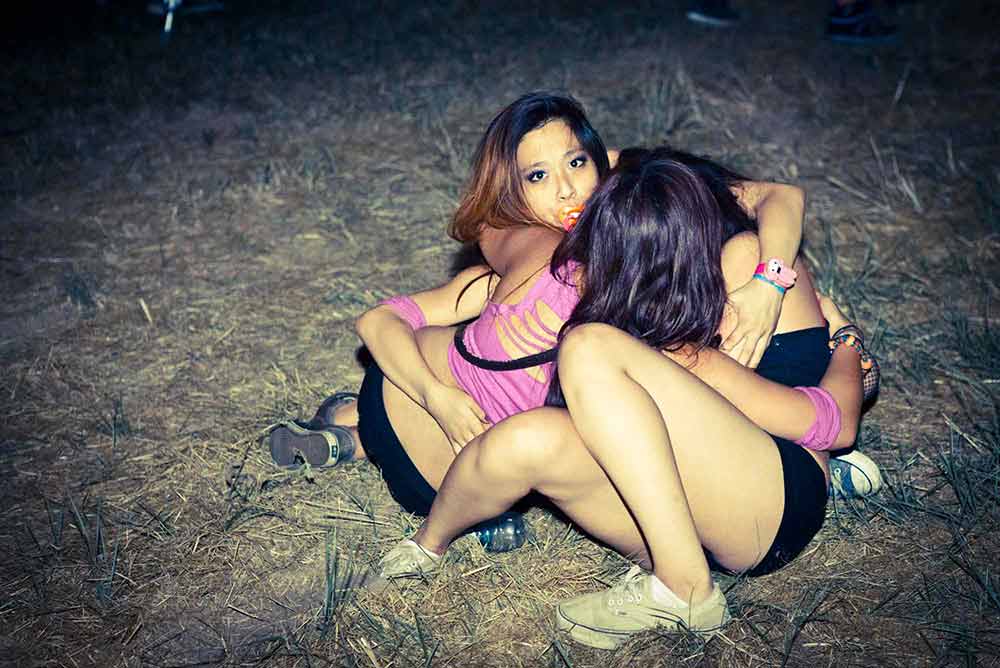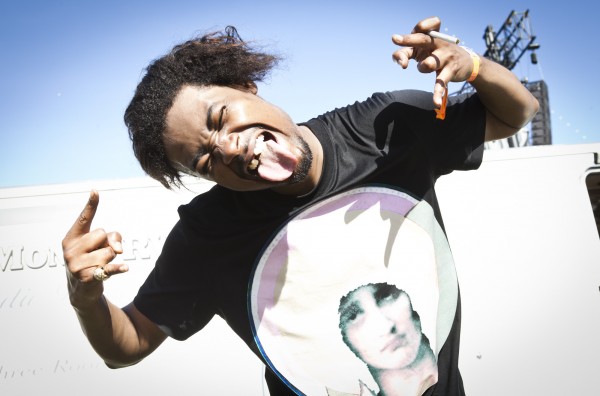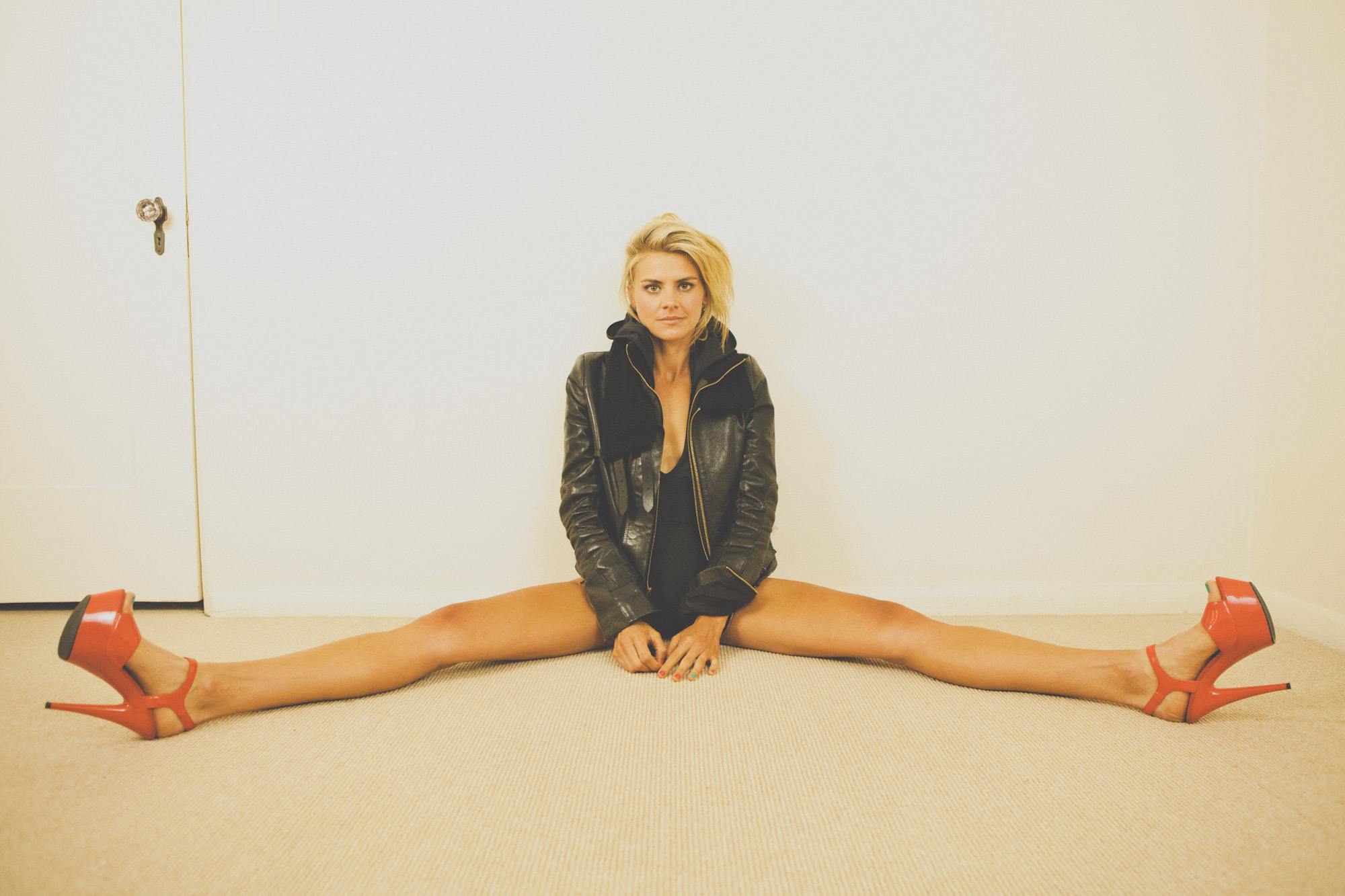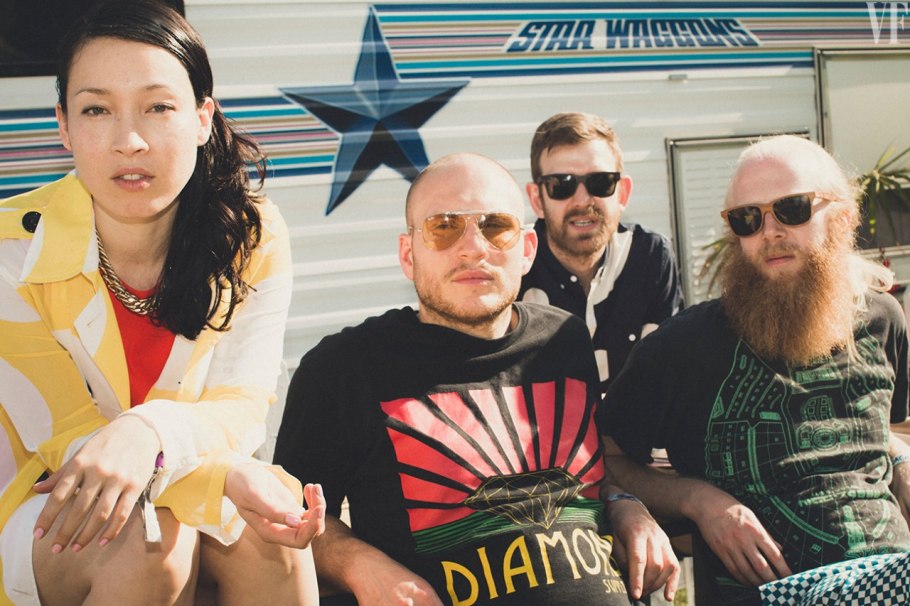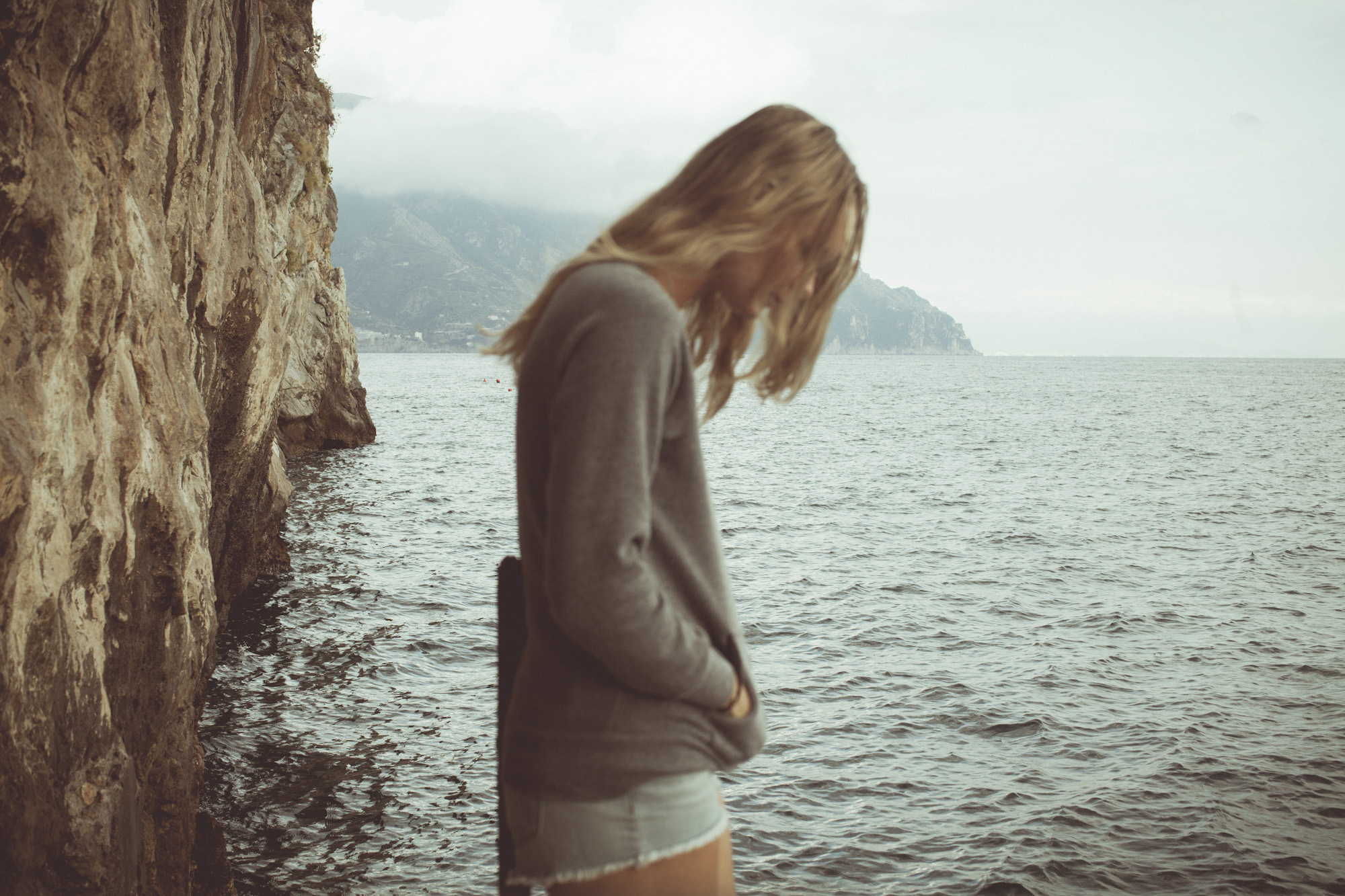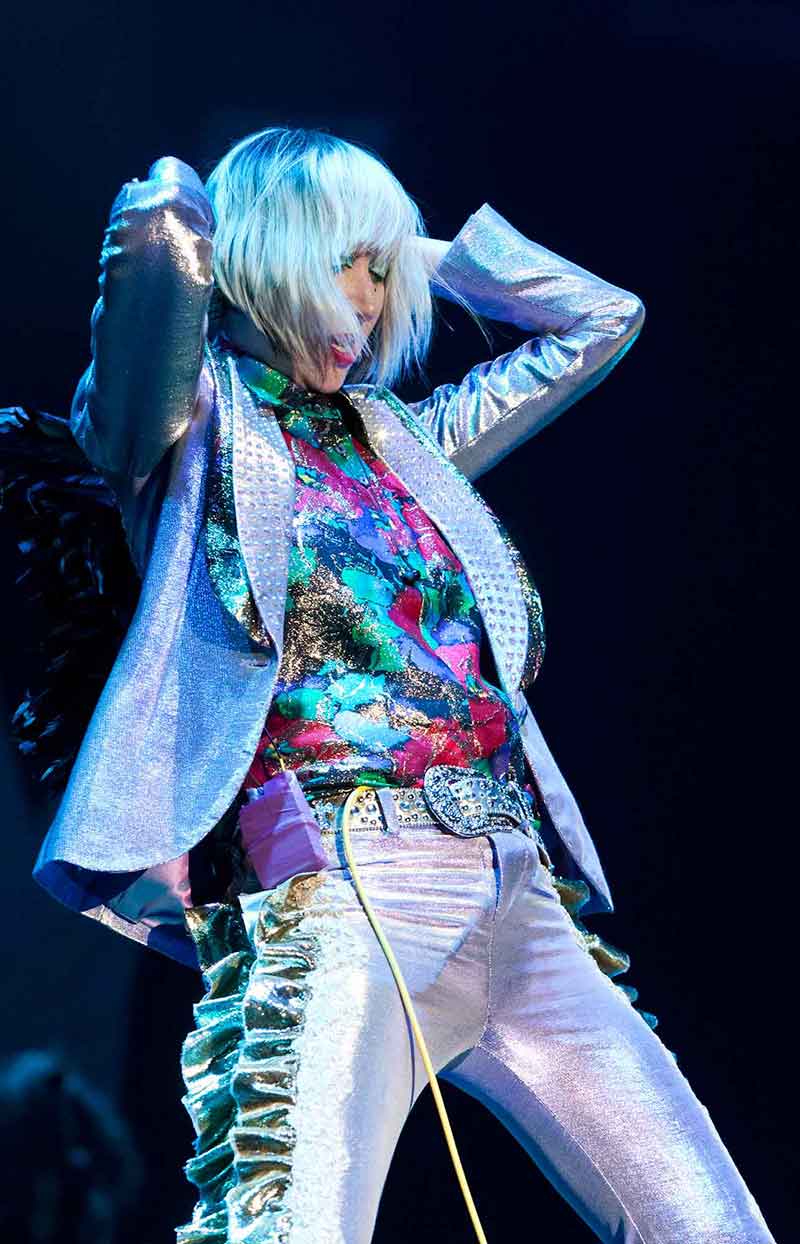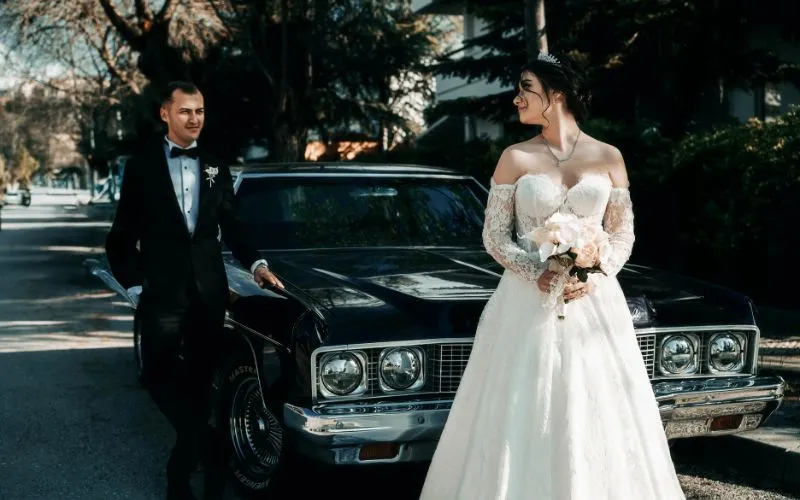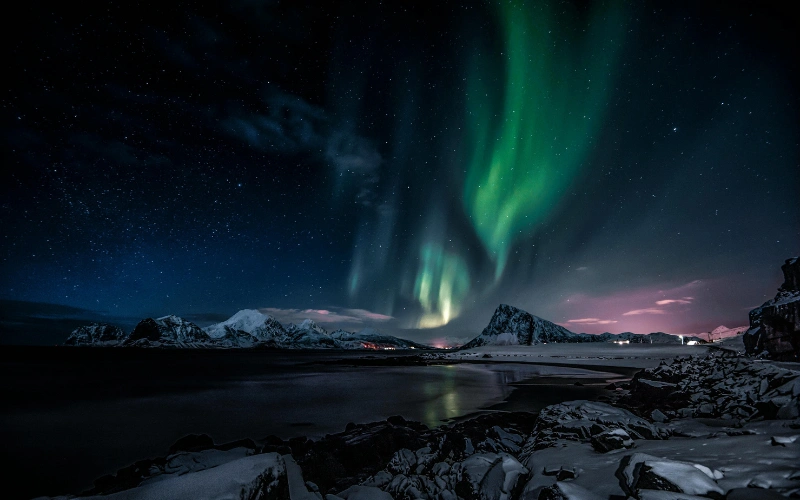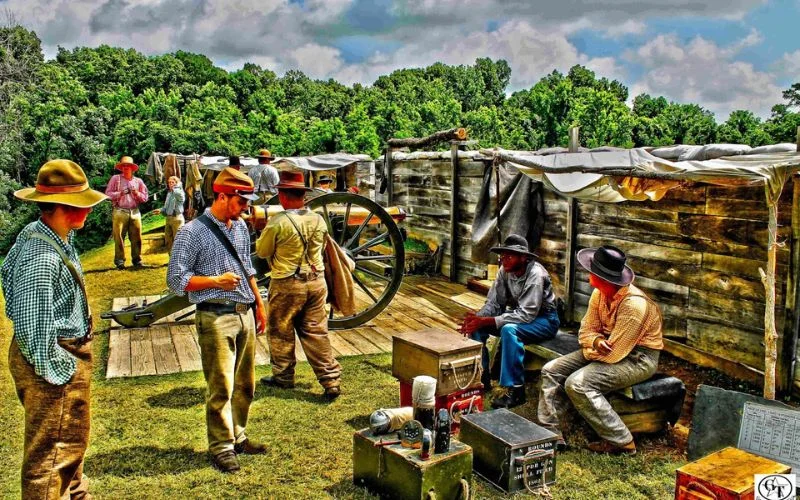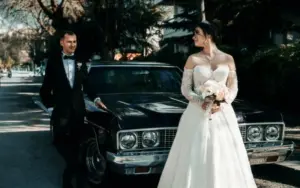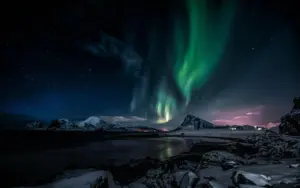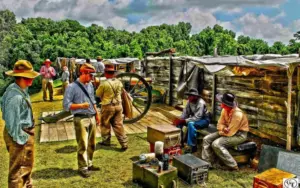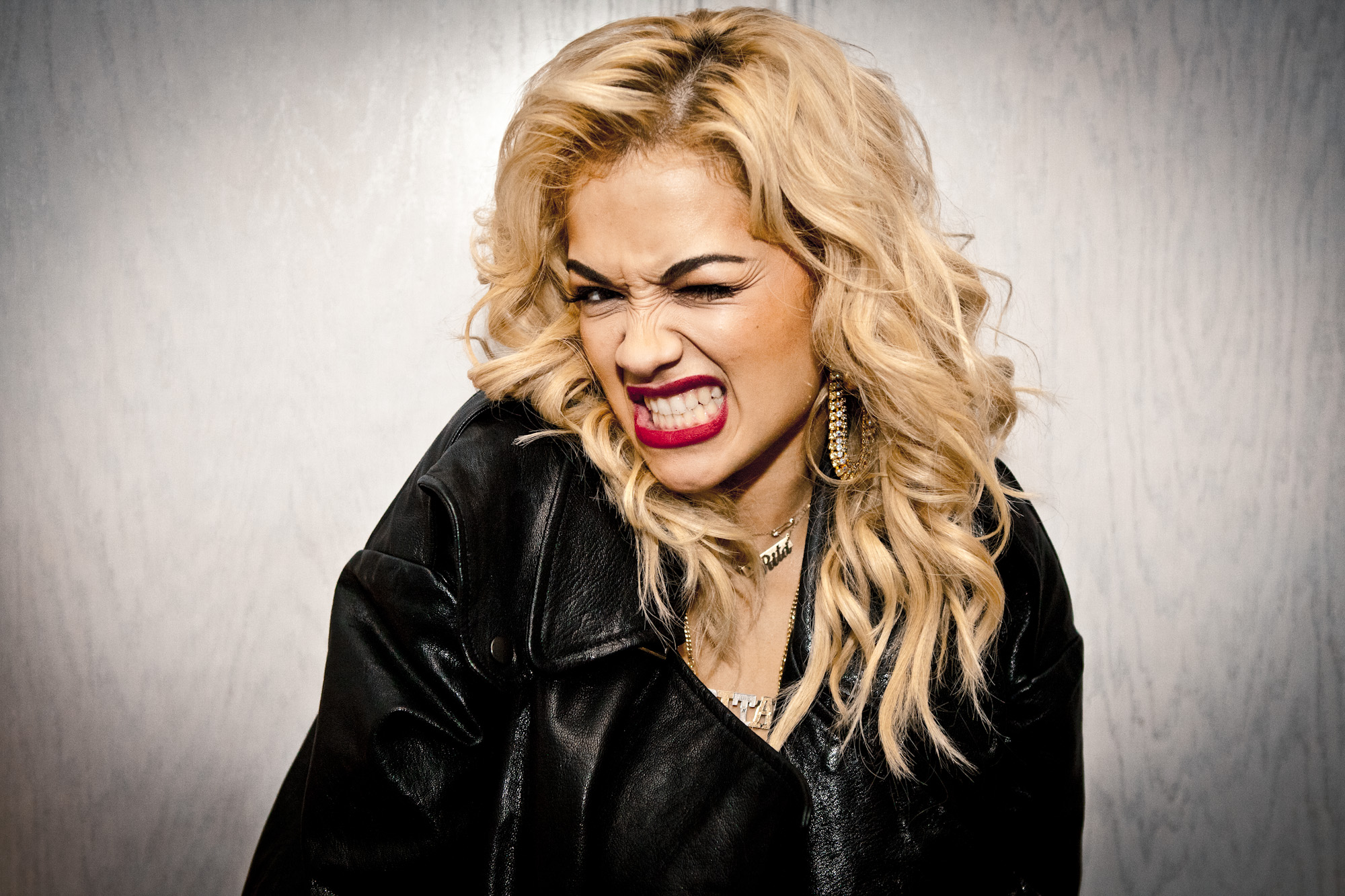
Los Angeles photographer Catie Laffoon loves music. You could even say that she loves it more than photography. Though, like a perfect couple, they never fail to support each other. Her playlists set the tone of her shoots, musicians dominate her portfolio, and her approach to portraiture is based on how music affects her, that’s where the concept of Musical Portraits stems from. As she told me, “I want to see your eyes and know every feeling that’s passing through your body. And that’s how I approach shooting a live show, the same way I approach a portrait and create Musical Portraits.”
It’s no surprise she’s been featured by all the music loving magazines, like Vanity Fair, Interview, and Billboard, as well as record companies like Interscope, Warner Bros., and Columbia Records. In shooting her friends like the biggest bands, shooting large festivals like the most intimate of moments, and capturing a person’s most personal song, Laffoon makes Musical Portraits that flawlessly combine two ways of seeing the world, getting closer to that more immediate image, that genuine expression, music always seems to uncover best.
In this interview, Laffoon talks about how she got her start in photography, explains how music fuels her work, and reveals how she achieves honesty in her portraits.
I’d describe your work as natural and expressive. How would you describe your work? How did you get your start?
If I look back, I think photography has always been there, I just never gave myself permission to explore it, until one day I did, and it changed my life. When I moved to LA, all the friends I made were in bands. Photography was always something I was interested in, it seemed fun, and when my friends needed photos for their websites, but they didn’t have money to hire a photographer, I just always offered to shoot for them. I realized after a while that I wasn’t happy in the film industry, I thought I wanted to be a director, so I took a step back. I needed a way to make rent while I figured out my life, so I told my music friends I was available for hire if anyone needed a photographer. People started passing my name along. One day I was shooting and it just all clicked in my brain that this was my passion, and it had been all along. Everything changed after that. As far as how I would describe my work, I’d agree with you. I’d say it’s also beautiful and honest, sensual and a little dark, yet playful. There’s always that line between inappropriate and sensual — I don’t know why I always seem to find that line, but I do. I’m fascinated by it. I love seeing people let down their guard and just be whatever they are in a moment, seeing their real selves, or whichever part of themselves they are willing to let me witness.
I found your work through Vanity Fair’s behind the scenes gallery for Coachella 2014. Any favorites from that set? What was that experience like?
I’ve shot Coachella several times, so that wasn’t a new experience. I was shooting this year for Vanity Fair — who for me are the be all end all — so I think I attached a little more pressure on myself than usual. But honestly, everything goes out the window once I have the camera in my hands and whomever I’m shooting is in front of me. Since I’ve cut my teeth in music, and a lot of that shooting festivals, I think I’ve learned how to create intimacy in a very short amounts of time. Sometimes you only have one minute with an artist or band — it can get really run and gun. I spent a little more time with the bands this year, and I think it made it more relaxed for the artists. I tried to make the shoots as non-eventful as possible, if that makes sense? I wanted them to feel like they were getting a slight reprieve from the media circus that tends to take place at Coachella and that they had a few moments to relax. I think my favorites from this gallery are the shots of Ellie Goulding, Warpaint, The Naked and Famous, and Tom Odell.
You’ve worked with many well-known clients. Who was your first client? How did you secure that job?
My first client? That’s sort of a hard question. My first professional job, so I guess real client, was for ChinaShop Magazine, a blog owned by Red Bull (which later lead me to working directly for Red Bull) — I shot a Peter Bjorn and John show. It was hilarious. My friend, Nicole, was writing for them and I had told her I’d love to work with her at some point. She texted me a couple months later and said she booked a last minute gig and could I be there in 2 hours? I was throwing a birthday BBQ for my brother — I told them they could stay but I had to go. The editor Barbie Brady loved my photos from the show and she worked me into the rotation. She’s been one of my biggest cheerleaders ever since. She made me believe in myself and continues to do so today. And everything else has been word of mouth honestly. It’s been really amazing.
Music seems to have a great influence in your work. What draws you to photographing musicians and live music?
I LOVE music. It’s a part of me. It’s a part of my shoots. I customize playlists for every shoot. Music helps me get lost in images and feelings, because that’s part of what it does, it helps us express. When I‘m at a show listening to an artist or a band and if you can draw me in, I’m automatically intrigued by you, and I want to know what you’re thinking, feeling, whether you’re connecting to the song or to the crowd. I want to see your eyes and know every feeling that’s passing through your body. And that’s how I approach shooting a live show, the same way I approach a portrait. I’m looking for that connection, not just an image that looks cool. And I love working with musicians because a lot of times they don’t know how to do photo shoots — they don’t like them and they don’t care. And I love that. They get let off the hook of having to perform because I don’t want them to. I just want to know them, to see them. We get to have a conversation and I get to expose another side of them most people rarely ever get to see — if I’m lucky.
I really like your Culture section. But, personally, being around so many people seems chaotic and exhausting. How do you maintain the energy? What’s your approach to photographing strangers?
Haha, well, it is chaotic and exhausting. When I’m shooting, everything is tunnel vision and I think adrenalin takes over, no matter what I’m shooting. I’m a waste of space after a shoot. I really love being an observer. I love to people watch. I tend to think of my portraiture as observing moments, and with this section, it really is an honest depiction of moments around me — being the open observer. My life can be fascinating at times. If I’m photographing strangers, there are a couple different approaches I take. Honestly, if I can, I’d rather just be a fly on the wall observing moments as they happen naturally and never be seen. The best moments are the ones nobody knows you are witnessing. There are times (not depicted in my culture section) where you can suss out if someone might be up for being photographed for a certain end game. But I think a lot of that is being in tune with people, their energy and where they are heading (a show, dinner, work, etc). Just be aware and be inviting. I find that if I’m open and I smile and tell them exactly what I’m doing, people are generally game, and if they aren’t, it probably has nothing to do with me.
When first assigned a celebrity client, what are your first steps to starting the job? Do you research their work?
I feel like I should say yes, but honestly, no. If I don’t know who they are, I might look them up and see what sort of imagery they have done, and most of the time I feel like the image of them I see isn’t being represented. I generally get a sense, a feeling, a vibe of a person — or of the person that isn’t being seen, and I think and plan around that. But there isn’t a ton of planning past location and a playlist. I get those locked in and everything else just happens naturally. I don’t like to plan my shots, that’s not fun for me and it doesn’t feel authentic. I like to create a play space for people — a safe space to feel, create, express and play — everything happens naturally once we are shooting in that space.
You say in your bio that you look for honesty and connection in your portraits. If you had to teach a class on achieving this, how would you structure your first lesson?
Wow, that’s a question. Create a safe space for your subjects, I call it my play space, but really I’m creating an environment that’s safe to express, feel, reject, whatever. Being photographed is a very intimate thing, so controlling the energy you allow on set is vital. I’m very particular about who I allow on my sets — my shoots are intimate, my walls come down, their walls will come down, it has to be safe. So that means, glam, wardrobe, “the entourage,” anyone who steps foot on your set is taking part in the experience you are trying to create. If you don’t have the correct energy, you will not be allowed on my set. And you shouldn’t let it on yours.
The most important aspect of this, however, is being open yourself. I think it’s easy to get lost in technical details, lights, camera, action — and controlling how the subject looks. I figure out all my lighting and technical stuff before someone steps onto my set, and that way I’m open to them, interacting and conversing, being ridiculous or telling personal stories. And I’ll almost never correct someone in how they look. If you want honesty, be very aware of how you correct a subject — especially women. There’s a very subtle way you can lead someone to where you want them to be, but if you overcorrect, they are over thinking, and I don’t want an image of someone thinking about the picture they are taking — I want an image of someone lost in an experience. Create that experience for them.
The self-portrait in your bio is great. It looks like you’re walking on water. What does this photograph say about you? Any last words on how photography has affected your life?
I would say that image is a perfect representation of me or, at least, how I see me — although I hadn’t really thought about it until you made me look at it again. I’m surrounded by a beautiful world that’s in focus, and I’m out of focus and hiding behind my hair. I really have a hard time being seen, or with the idea of being seen. I can always empathize with people who are camera shy, yet we all want to be seen — nobody wants to be invisible. And I think that’s where photography comes into my life. I’m able to show everyone how I see the world around me, how I see you — I will see you as nobody else does — which is what makes photography fascinating to me, the point of view. And by sharing my point of view, I feel like a part of me is being seen.
Her love of music and photography has been one of the passion that has led her to create Musical Portraits.
Be sure to check out all of Catie’s work on her Musical Portraits over her website!

